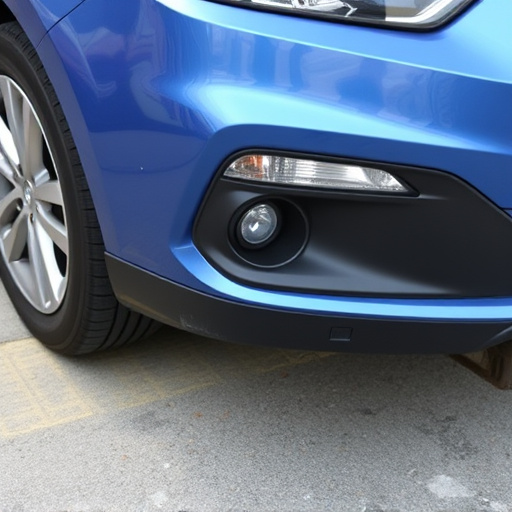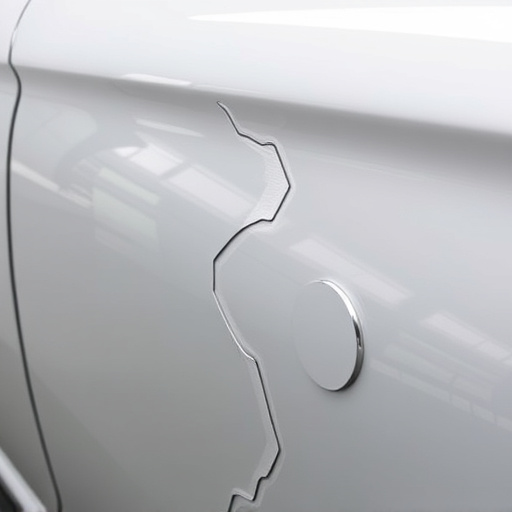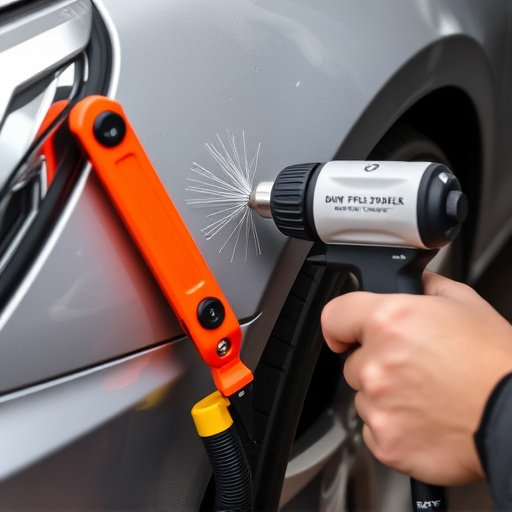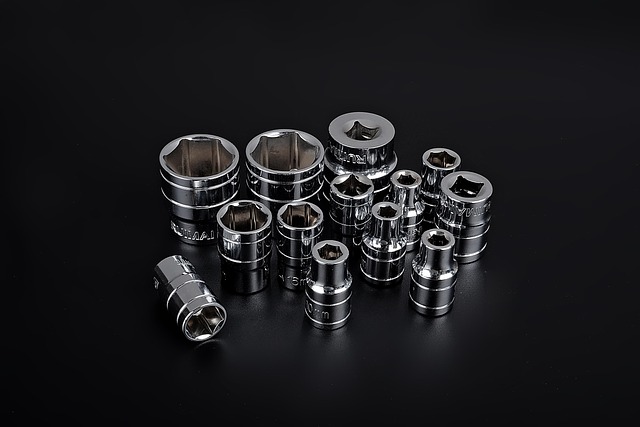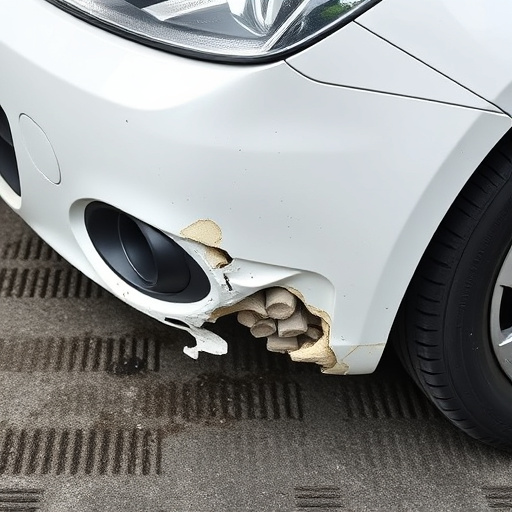Category: plastic panel repair replacement
Plastic Panel Repair and Replacement: A Comprehensive Overview
Introduction
Welcome to an in-depth exploration of the world of plastic panel repair and replacement, a critical aspect of modern manufacturing, construction, and sustainability efforts. This article aims to guide readers through the intricacies of this process, highlighting its importance, various techniques, global impact, and future potential. By delving into each section, we will uncover the multifaceted nature of plastic panel repair and its role in shaping industries worldwide.
Understanding Plastic Panel Repair and Replacement
Definition and Core Components
Plastic panel repair and replacement is a specialized process involving the restoration or substitution of damaged or outdated plastic panels. These panels are integral components in various structures, from automotive bodies to building facades, electronic enclosures, and consumer goods packaging. The core elements include:
- Plastic Materials: This can range from common polymers like polyethylene (PE), polypropylene (PP), and polyvinyl chloride (PVC) to more advanced composites and engineered plastics.
- Damage Assessment: Identifying the extent of damage, be it cracks, dents, scratches, or complete failure, is crucial for effective repair or replacement strategies.
- Reparation Techniques: These include methods such as bonding, welding, hot air melting, compression molding, and 3D printing, each suited to different plastic types and applications.
- Replacement Parts: In some cases, custom-made replacements are required, necessitating precise manufacturing techniques and material selection.
Historical Context
The concept of repairing and replacing plastic panels has evolved significantly over the past century. Early methods involved simple gluing and clamping for minor damages, while more complex repairs required specialized equipment and expertise. The development of modern adhesives, advanced welding techniques, and 3D printing technologies has revolutionized this field, enabling faster, more precise, and environmentally friendly solutions.
Significance and Applications
Plastic panel repair is vital for several reasons:
- Cost Efficiency: Repairing damaged panels can be significantly more cost-effective than complete replacement, especially for specialized or custom-made parts.
- Environmental Sustainability: It reduces waste and the need for virgin plastic production, contributing to circular economy principles.
- Safety and Functionality: Restored panels ensure structural integrity, enhance product lifespan, and maintain safety standards in various industries.
- Aesthetics: In architectural and design contexts, repairing or replacing panels can revive the appearance of structures, maintaining their visual appeal.
Global Impact and Trends
International Influence
Plastic panel repair and replacement is a global phenomenon, with varying adoption rates and unique regional trends:
| Region | Adoption Rate (%) | Key Drivers | Challenges |
|---|---|---|---|
| North America | 65% | Strong manufacturing base, focus on sustainability | High labor costs, stringent regulations |
| Europe | 72% | Strict environmental policies, advanced technology | Material availability, trade barriers |
| Asia Pacific | 58% | Rapid industrialization, growing awareness | Inconsistent quality standards, lack of skilled labor |
| Latin America | 42% | Increasing plastic waste, local initiatives | Limited access to technology, economic disparities |
| Middle East & Africa | 35% | Growing construction sector, resource abundance | Political instability, inadequate infrastructure |
Global Trends Shaping the Industry
- Sustainability Focus: There is a growing emphasis on eco-friendly practices, with industries adopting recycling and upcycling strategies for plastic panels.
- Digitalization: The integration of digital technologies, such as computer-aided design (CAD) and 3D printing, is transforming repair and replacement processes, improving precision and efficiency.
- Customized Solutions: Advancements in additive manufacturing enable the creation of tailored panel replacements, catering to unique design requirements.
- Global Standardization: Efforts are being made to harmonize quality standards and safety protocols worldwide, ensuring consistent repairs across borders.
Economic Considerations
Market Dynamics
The plastic panel repair and replacement market is dynamic and diverse:
- Market Size (2023): Approximately $15 billion, projected to grow at a CAGR of 7% until 2030.
- Key Drivers: Increasing plastic waste, rising demand for sustainable products, and the need for cost-effective repairs.
- Segmentation: The market can be divided into repair services, replacement parts manufacturing, and technology providers.
Investment Patterns
The industry attracts investments from various sources:
- Government Grants: Many countries offer incentives for eco-friendly practices, encouraging R&D in plastic repair technologies.
- Private Sector Ventures: Companies invest in innovative solutions, especially those with potential for scalability and environmental impact.
- Collaborative Partnerships: Public-private partnerships drive infrastructure development, waste management, and sustainable manufacturing initiatives.
Economic Impact
- Job Creation: The industry supports a significant workforce, ranging from skilled technicians to engineers and manufacturers.
- Revenue Generation: Successful businesses in this sector contribute to national economies through sales, exports, and tax revenues.
- Cost Savings: Effective panel repair can reduce waste disposal costs and lower production expenses for manufacturers.
Technological Advancements
Innovations in Plastic Repair
Recent technological breakthroughs have significantly enhanced plastic panel repair capabilities:
- Advanced Adhesives: Newer adhesives offer improved bond strength, flexibility, and resistance to environmental factors, making them suitable for diverse applications.
- Laser Welding: High-precision laser welding techniques enable efficient and clean repairs, even on complex geometric shapes.
- 3D Printing (Additive Manufacturing): This technology allows for the creation of custom panel replacements, reducing lead times and costs for specialized parts.
- Digital Imaging and Modeling: CAD software and 3D scanning technologies facilitate precise damage assessment, design of replacement parts, and quality control.
Impact on Industry Practices
Technological advancements have led to:
- Increased Efficiency: Streamlined repair processes reduce labor hours and material waste, improving overall productivity.
- Enhanced Precision: Advanced tools enable more accurate repairs, ensuring structural integrity and aesthetic appeal.
- Sustainability: Digitalization and additive manufacturing contribute to circular economy principles by minimizing material use and waste generation.
Future Potential
The future holds immense potential for technological growth:
- Smart Repairs: Integration of Internet of Things (IoT) sensors and predictive analytics can enable real-time monitoring of panel health, facilitating proactive repairs.
- Biomimicry: Drawing inspiration from nature, scientists are developing bio-based plastics and repair methods, aiming for complete biodegradability.
- Robotic Repair Systems: Autonomous robots equipped with advanced vision systems and precision tools could revolutionize complex repair tasks.
- Advanced Materials: Researchers explore novel materials, such as graphene-enhanced polymers, offering superior strength, flexibility, and durability.
Policy and Regulation
Governance of Plastic Panel Repair
The regulatory landscape surrounding plastic panel repair and replacement varies globally but generally aims to ensure safety, environmental protection, and fair trade practices:
- Product Safety Standards: Organizations like UL (Underwriters Laboratories) and IEC (International Electrotechnical Commission) set guidelines for plastic panel performance, durability, and toxicity.
- Environmental Regulations: Many countries have implemented laws promoting recycling, waste reduction, and sustainable materials usage in the manufacturing sector.
- Trade Policies: Import and export regulations are in place to control the movement of plastic products, ensuring compliance with environmental and safety standards.
Legislative Frameworks and Their Influence
Key legislative frameworks include:
- EU’s Circular Economy Package: This package introduces legislation promoting recycling, waste reduction, and sustainable product design, influencing global industry practices.
- US OSHA (Occupational Safety and Health Administration) Standards: OSHA sets guidelines for workplace safety, including handling of hazardous materials and ergonomic considerations during repairs.
- Global Agreement on Plastics (GAP): An international agreement aiming to improve plastic management, reduce pollution, and foster collaboration among nations.
Challenges and Criticisms
Main Issues in Plastic Panel Repair
Despite its numerous benefits, the process faces several challenges:
- Skill Shortage: There is a lack of skilled technicians capable of performing complex repairs, especially with advanced technologies.
- Material Availability: Sourcing high-quality repair materials, especially for specialized plastics, can be challenging and costly.
- Regulatory Compliance: Keeping up with evolving regulations and quality standards is a continuous challenge for businesses.
- Environmental Concerns: While promoting sustainability, the industry must address the environmental impact of waste generation during repairs.
Proposed Solutions
To overcome these challenges:
- Training Programs: Governments and industry bodies should collaborate on comprehensive training initiatives to upskill technicians.
- Material Supply Chain Collaboration: Establishing global supply networks for repair materials can ensure availability and reduce costs.
- Standardization of Practices: Developing international standards for repair procedures and quality control will enhance consistency and compliance.
- Green Repair Initiatives: Promoting eco-friendly practices, such as recycling waste materials and using biodegradable adhesives, is crucial.
Case Studies
Successful Applications and Lessons Learned
1. Automotive Industry: Ford Motor Company
Ford implemented a comprehensive plastic panel repair program, focusing on sustainability and cost savings. They developed in-house training programs to upskill technicians in advanced repair techniques using laser welding and 3D printing. This initiative resulted in:
- A 25% reduction in panel replacement costs.
- Lower environmental impact due to waste minimization and recycling.
- Improved vehicle durability and customer satisfaction.
2. Construction Sector: Green Buildings in Dubai
Dubai’s ambitious green building projects required extensive use of plastic panels for insulation and facade applications. Local repair companies adopted innovative solutions, including:
- Customized 3D printing of panel replacements, ensuring perfect fit and aesthetics.
- Implementation of smart sensors for real-time monitoring of panel performance.
- Training local technicians in advanced repair methods, fostering skill development.
3. Consumer Goods Packaging: Coca-Cola’s Eco-Initiative
Coca-Cola embarked on a journey to reduce plastic waste by promoting panel repair and recycling. They partnered with local repair shops to:
- Collect and refurbish used packaging materials for reuse.
- Educate consumers on proper panel disposal and recycling.
- Develop sustainable packaging designs, minimizing the need for repairs.
Future Prospects
Growth Areas and Emerging Trends
The plastic panel repair and replacement market is poised for significant growth:
- Sustainable Construction: With the global focus on green buildings, the construction sector will drive demand for eco-friendly repair solutions.
- Automotive Electrification: The rise of electric vehicles (EVs) presents opportunities for specialized panel repairs due to advanced material usage and design complexities.
- Advanced Manufacturing: Additive manufacturing is expected to grow exponentially, opening new avenues for customized panel replacements.
- Digitalization of Services: Online repair platforms and remote consulting services will gain traction, making repairs more accessible.
Strategic Considerations
To capitalize on future prospects:
- Innovation Partnerships: Collaborating with research institutions and startups can drive technological advancements and maintain a competitive edge.
- Global Expansion: Exploring international markets, especially in regions with growing manufacturing and construction sectors, offers significant growth opportunities.
- Sustainability Integration: Incorporating eco-friendly practices throughout the value chain will be essential for long-term success and market acceptance.
- Digital Transformation: Investing in digital technologies enables efficient operations, better customer engagement, and data-driven decision-making.
Conclusion
Plastic panel repair and replacement is a dynamic and ever-evolving field, playing a critical role in various industries worldwide. From its technical intricacies to global implications, this process has come a long way, driven by technological advancements, growing environmental consciousness, and economic considerations. As the industry navigates challenges and embraces emerging trends, it sets the stage for a more sustainable and efficient future.
FAQ Section
Q: What are the most common types of plastic panels that require repair?
A: Common plastic panels include polyethylene (PE), polypropylene (PP), polyvinyl chloride (PVC), and acrylonitrile butadiene styrene (ABS) used in construction, automotive, packaging, and consumer electronics.
Q: How can I determine if a plastic panel needs repair or replacement?
A: Inspect the panel for cracks, dents, scratches, or any signs of structural compromise. Advanced imaging techniques and digital measurement tools can aid in damage assessment.
Q: Are there any environmental benefits to repairing plastic panels instead of replacing them?
A: Absolutely! Repairing reduces plastic waste, conserves resources, and minimizes the carbon footprint associated with new material production and transportation.
Q: Can 3D printing be used for all types of plastic panel repairs?
A: While 3D printing offers great flexibility, it is most suitable for complex geometric shapes and customized replacements. For simple damage, traditional repair methods may be more cost-effective.
Q: What role does government play in promoting plastic panel repair and replacement?
A: Governments can drive the industry forward through incentives, regulatory frameworks, and public awareness campaigns. They also support research and development initiatives to enhance sustainable practices.
Spot Plastic Panel Damage: When to Replace with Pros

Vehicle plastic panel repair replacement services are vital for addressing damage like dents, cracks…….
Mastering Communication for Successful Plastic Panel Repair Replacement

Before engaging a technician for plastic panel repair or replacement, understand that specialized sk…….
Advanced Adhesives Revolutionize Plastic Panel Repair Replacement

Advanced adhesives and polymers transform plastic panel repair and replacement, offering unparallele…….
Mastering Plastic Panel Repair: Shop Selection Guide

Thoroughly assess vehicle damage for cracks, chips, dents, or deformities. Evaluate severity to dete…….
Mastering Plastic Panel Repair Replacement Techniques

Plastic panels on vehicles suffer from weather damage, accidents, and chemical exposure, leading to…….
Revolutionize Plastic Panel Repair with Advanced Adhesives
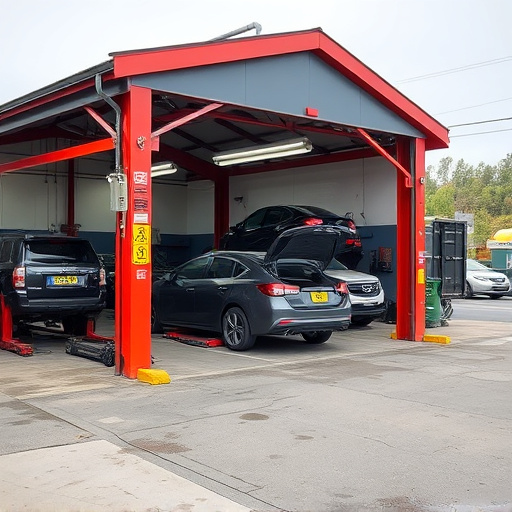
Advanced adhesives revolutionize plastic panel repair replacement with increased bonding strength, f…….
Plastic Panel Repair: Boosting Resale Value Through Expert Replacement

Timely plastic panel repair replacement by professionals using advanced techniques is crucial for ma…….
Maintain Plastic Panels After Repair Replacement

Proper surface preparation, including cleaning, dent repair, and using recommended adhesives, is vit…….
Climate, Weather, Temperature: Plastic Panel Repair Durability Keys

Extreme weather conditions, including UV rays and temperature fluctuations, accelerate the degradati…….

